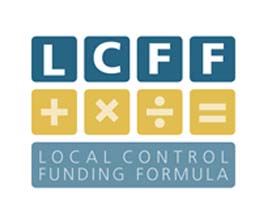By Julie Maxwell-Jolly, Ph.D.
As the Local Control Funding Formula and its Local Control and Accountability Plan are added to existing accountability measures under No Child Left Behind and the Common Core State Standards, education policymakers are talking about how local educational agencies can coordinate the three accountability systems.
At a recent seminar hosted by Policy Analysis for Education, CSBA Assistant Executive Director for Policy and Programs Angelo Williams, Ed.D., joined several state-level education policymakers to discuss the different approaches to accountability and offer their best suggestions for going forward.
The big questions about the simultaneous rollout of LCFF and the Common Core standards on top of NCLB accountability, according to PACE Executive Director David Plank, are:
• How do the three work together?
• Do they have the same or different ends?
• Are the three collectively, or any of the three alone, sufficient to sustain student progress?
Assistant Deputy Superintendent of Public Instruction Deb Sigman said that in her view, the three approaches are complementary, as all focus on standards-driven accountability. The CalMAPP, or California Measurement of Academic Performance and Progress, system established by Assembly Bill 484 lays out changes to the Academic Performance Index in the post-STAR era: It “recognizes the reality of powerful, historical transformation in our education system,” Sigman told the audience at the Secretary of State’s office in Sacramento. The event was also recorded and is available for viewing online.
Commenting on the NCLB waiver the U.S. Department of Education recently granted a group of California school districts, Sacramento City Unified Superintendent Jonathan Raymond noted that since NCLB failed to drive achievement and was overly simplistic, the waiver granted the Coalition to Reform Education, or CORE, will focus on how to do accountability right with college and career readiness as “the new North star in town.” CORE is happy to share its model—now involving 1 million students—with interested districts, Raymond said.
Speaking to the State Board of Education’s perspective on LCFF, SBE Member Sue Burr said the Board is trying to build a coherent model accountability that ‘finally gets out of districts’ way’ and allows LEAs to do their best work.
CSBA’s Williams joined a panel responding to the discussion, emphasizing that the idea of local control is much more than rhetoric. Through its LCFF educational outreach, CSBA has been out in the field talking to board members, looking for opportunities to enhance their knowledge and expertise around LCFF implementation. “Their passion around education needs to be met with quality information,” Williams said, and CSBA is providing guidance on how to set the conditions for student success by viewing budgeting as an investment in student success. Because LCFF changes the way boards and communities work together, innovative ideas for reaching out to community partners who are not usually at the table in district planning are needed, he reminded listeners.
Along with Williams, the commentary and discussion panel included Arun Ramanathan, executive director of Education Trust-West; Rick Simpson, deputy chief of staff to California State Assembly Speaker John Perez; Merrill Vargo, executive director of Pivot Learning Partners.
An intriguing poll for PACE and the USC Rossier School of Education found that Californians strongly support standardized testing, and yet they trust their child’s teacher and want decisions to be made at the local level. These seemingly contradictory results probably indicate that Californians are instinctively developing a system of checks and balances when it comes to education policy, concluded one of the pollsters, Jeff Harrelson, vice president of MFour Strategies, Inc.. He conducted the research along with Ben Tulchin of Tulchin Research, who found that there is a “huge gap” between the level of discussion between policymakers and that of the average voters. For instance, since three of four voters have no interaction with public schools, they know nothing about changes like LCFF or Common Core. Proposition 30, on the other hand, passed because the impact of years of school budget cuts had become common knowledge. The PACE/USC Rossier Poll, which also touches on teacher evaluation, can be seen at the PACE website.






Be the first to reply